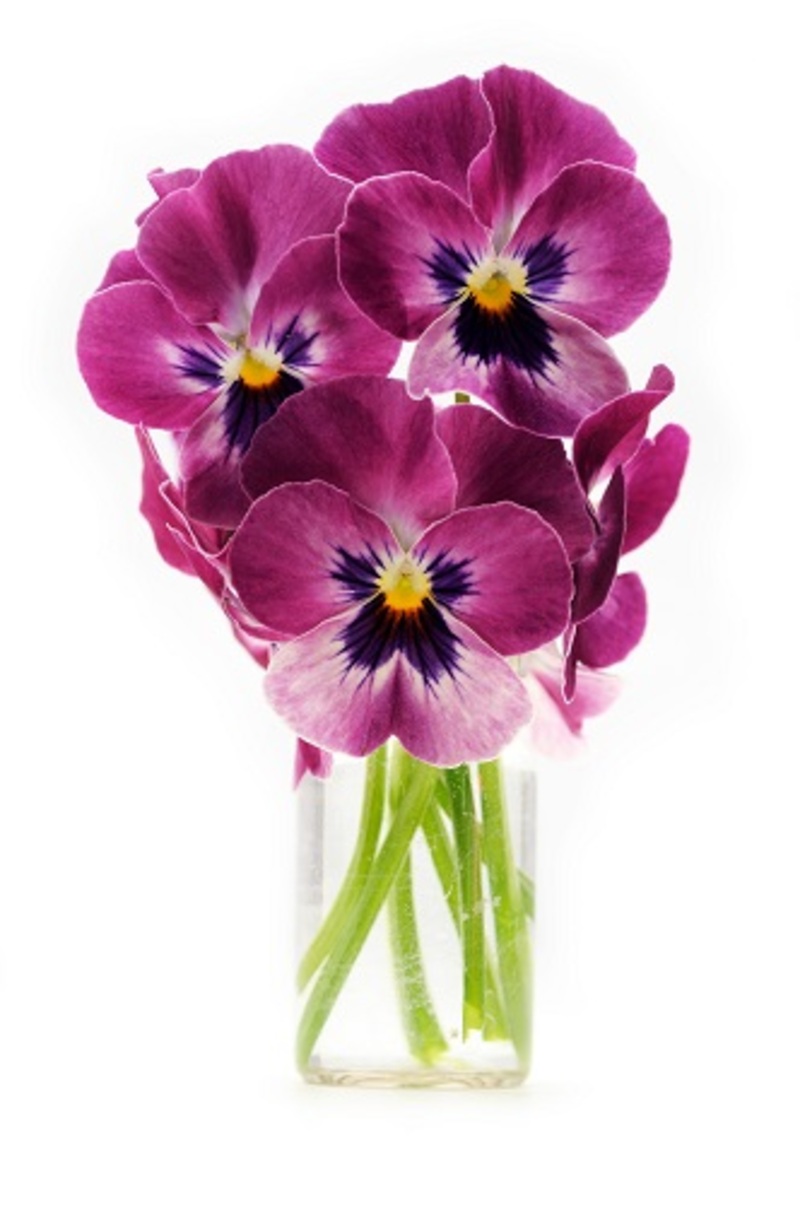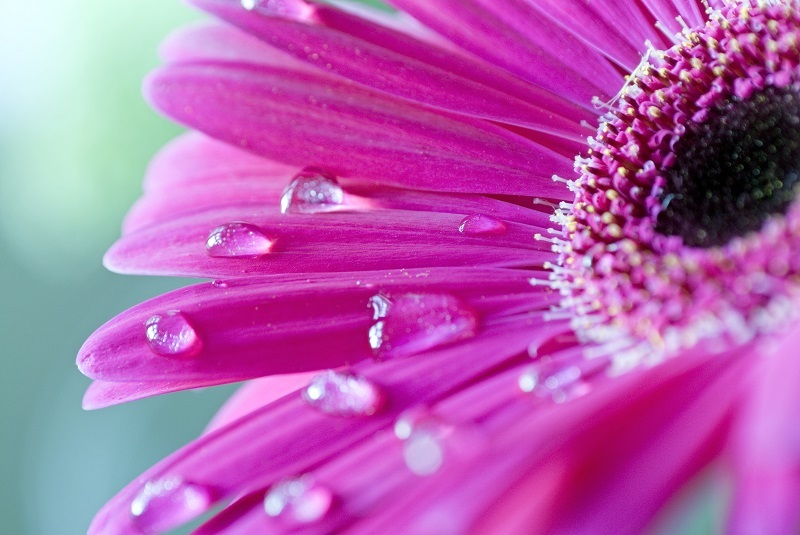Birth month flowers and their meanings: a journey into floral symbolism
Posted on 14/08/2025
Birth Month Flowers and Their Meanings: A Journey Into Floral Symbolism
Throughout history, flowers have captivated human society with their aesthetic beauty, fragrant aromas, and deep symbolism. A lesser-known yet intriguing aspect of floral symbolism is the concept of birth month flowers. Just as each month is represented by a birthstone, so too does every month possess a flower (or sometimes, a pair) that encapsulates unique meanings and traditions. This comprehensive journey into birth month flower symbolism will unveil the stories, meanings, and cultural significance behind each month's floral emblem.
What Are Birth Month Flowers?
Birth month flowers are blossoms traditionally associated with each month of the year. Similar to zodiac signs and birthstones, these flower symbols carry special meanings and convey messages relating to personality, traits, or wishes. The associations can be traced back to Roman times and developed through the Victorian era, when the language of flowers--floriography--became especially popular in conveying messages.
- Personal significance: Birth month flowers allow people to connect events and milestones with specific blossoms, adding a layer of meaning to celebrations like birthdays and anniversaries.
- Gifting tradition: Knowing the meaning behind birth flowers helps in selecting meaningful bouquets for loved ones on special occasions.
- Cultural insight: These flowers often derive from ancient cultural beliefs and stories, making them a window into history and tradition.
Let us embark on a month-by-month exploration of birth flowers and their symbolic meanings.

January Birth Flower: Carnation
Meaning and Symbolism
Carnations (Dianthus caryophyllus) are the traditional January birth month flower. Known for their frilled petals and wide range of colors, carnations convey a spectrum of meanings:
- Love - Red carnations symbolize romantic love and admiration.
- Purity and luck - White carnations represent pure love and good fortune.
- Gratitude - Pink carnations are emblematic of motherly love, gratitude, and thankfulness.
Across various cultures, carnations herald the new year with qualities of resilience and hope, making them a fitting flower for January birthdays.
February Birth Flower: Violet & Primrose
Violet Symbolism
The violet, with its delicate purple blooms, is a symbol of modesty, humility, and faithfulness. In Victorian times, violets were associated with spiritual wisdom and loyalty.
Primrose Significance
The primrose is also linked to February and stands for young love and the notion that "I can't live without you." Their early blooming during the last blast of winter signifies hope and renewal.
Gifting February birth flowers conveys messages of devotion, encouragement, and a promise of hope.
March Birth Flower: Daffodil
March is ushered in with the cheerful, trumpet-shaped daffodil (Narcissus). These flowers epitomize new beginnings, rebirth, and eternal life. As one of the first flowers to awaken after winter, daffodils symbolize optimism and joy.
Fun fact: In some cultures, presenting a bouquet of daffodils is said to bring happiness and good fortune for the year ahead.
April Birth Flower: Daisy & Sweet Pea
Daisy Symbolic Meaning
The classic daisy reflects innocence, purity, and true love. Its simple beauty makes it a universal emblem of new beginnings and childhood joy.
Sweet Pea Representation
The sweet pea, also an April flower, signifies blissful pleasure and heartfelt goodbyes. Sweet peas are often included in bouquets to express gratitude for happy times.
Offering April birth flowers communicates sincerity, innocence, and well-wishes for the future.
May Birth Flower: Lily of the Valley & Hawthorn
Lily of the valley (Convallaria majalis) encapsulates pure happiness, sweetness, and humility. Its delicate white bells are a favorite in bridal bouquets and symbolize the return of joy.
The hawthorn, with its fragrant blossoms, is linked to hope, fertility, and protection. In olden times, it was considered a safeguard against evil spirits.
- May birth month flower meaning: Happiness, purity, and hope usher in springtime celebrations.
June Birth Flower: Rose & Honeysuckle
Rose Symbolism
The timeless rose is the June birth flower, typifying love, beauty, and honor. Each color of rose conveys a slightly different message:
- Red: Passionate love
- White: Innocence and new beginnings
- Yellow: Friendship and joy
- Pink: Admiration and appreciation
Honeysuckle Association
The fragrant honeysuckle represents the sweetness of love and enduring bonds. It is often intertwined in gardens as a symbol of lasting affection.
July Birth Flower: Larkspur & Water Lily
Larkspur Meaning
Larkspur (Delphinium) is known for its tall spikes and vivid hues. It stands for an open heart, positivity, and strong bonds. Different shades carry nuanced meanings:
- Blue larkspur: Dignity and grace
- Pink larkspur: Fickleness and changing moods
- White larkspur: Innocence
Water Lily Symbolism
The serene water lily illustrates purity of heart, enlightenment, and grace. In many cultures, it also represents rebirth due to its daily blooming cycle.
August Birth Flower: Gladiolus & Poppy
Gladiolus Symbolism
The gladiolus, often called the "sword lily," symbolizes strength of character, integrity, and resilience. The name stems from the Latin word for "sword," referencing its tall, striking stems.
Poppy Meaning
Poppies reflect imagination, rest, and remembrance. Red poppies, specifically, have become an international symbol of remembrance for soldiers lost in war.
- August birth flower meanings: Remembrance, strength, and integrity.
September Birth Flower: Aster & Morning Glory
Aster Significance
Asters are star-shaped flowers representing wisdom, valor, faith, and patience. The name "aster" comes from the Greek word for "star," symbolizing guidance and hope.
Morning Glory Meaning
The morning glory opens each dawn and closes in the afternoon, symbolizing love that endures through adversity, unrequited love, and new beginnings.
October Birth Flower: Marigold & Cosmos
Marigold Symbolism
Marigolds are known for their rich autumn hues and association with warmth, creativity, and determination. In many countries, marigolds are used in festivals and religious ceremonies to honor ancestors and celebrate life.
Cosmos Flower Meanings
Cosmos personify order, peace, and modesty. The flower's harmonious petals express balance and serenity, making them a thoughtful gift for seeking calm and stability.
- October flower meanings: Passion, order, and creativity.
November Birth Flower: Chrysanthemum
The chrysanthemum is cherished worldwide, particularly in Asian cultures where it represents joy, longevity, and optimism. In Victorian floriography, it also stands for friendship and well-wishing.
- Red chrysanthemums: Love and deep affection
- Yellow chrysanthemums: Neglected love or sorrow (in some traditions), but in modern meaning, happiness and celebration
- White chrysanthemums: Loyalty and honesty
November's birth month flower celebrates resilience, happiness, and friendship even as the year draws to a close.
December Birth Flower: Narcissus & Holly
Narcissus Symbolism
The bright, delicate white and yellow narcissus (also called paperwhite) conveys hope, wealth, and fresh starts. It represents self-esteem and respect.
Holly's Special Meaning
Holly, with its spiky leaves and vibrant red berries, is a classic winter symbol of protection and domestic happiness. Traditionally, it was believed to ward off evil spirits and bring good luck to the household during the darkest months.
- December flower meaning: Renewal, luck, and joy during the holiday season.
How to Choose the Right Birth Month Flower
Selecting a birth month flower for yourself or as a gift carries both tradition and personal meaning. Here are a few tips for making a thoughtful selection:
- Consider the recipient's personality: Each flower symbolism can be matched to the qualities or aspirations of your loved one.
- Think about favorite colors: Most birth month flowers come in a variety of colors, each with unique meanings.
- Mix and match: Combining a birth flower with another flower significant to a personal milestone or preference can create a meaningful bouquet.
A bouquet composed of birthday flowers is not only visually stunning but also rich in heartfelt meaning.

The Origins and Evolution of Flower Symbolism
The practice of linking months to particular flowers originated with ancient Roman festival calendars and was later developed in medieval and Victorian Europe. Floriography, or the language of flowers, flourished during the 19th century as a discreet way to communicate emotions and sentiments that were otherwise socially difficult to express.
Today, birth month flower meanings are cherished in birthday celebrations, weddings, and as tokens of encouragement or sympathy, remaining an enduring tradition in modern society.
Conclusion: The Everlasting Power of Birth Month Flowers
From January's hopeful carnation to December's festive holly, birth month flowers offer a meaningful way to honor special moments and express heartfelt messages. Whether selected for their beauty, history, or symbolic richness, these flowers transcend mere ornamentation, serving as bridges between people and culture, past and present.
As you celebrate your next birthday or search for the perfect gift, consider the language of birth flowers. Each petal and hue tells a story--of hope, love, joy, remembrance, and more. In the journey through floral symbolism, the simple act of giving a flower becomes a lasting token that carries both tradition and timeless emotion.
Explore Your Birth Flower and Its Meaning Today
Learning about birth month flowers and their meanings adds depth to life's celebrations. Whether you embrace the tradition for yourself or delight a loved one with this thoughtful gesture, the beauty and significance of birth flowers are sure to bloom in every heart.
Latest Posts
Experience the Benefits of Greenery with 10 Low Maintenance Office Plants
Dive Into the Garden of You: Which Flower Are You?
Birth month flowers and their meanings: a journey into floral symbolism





